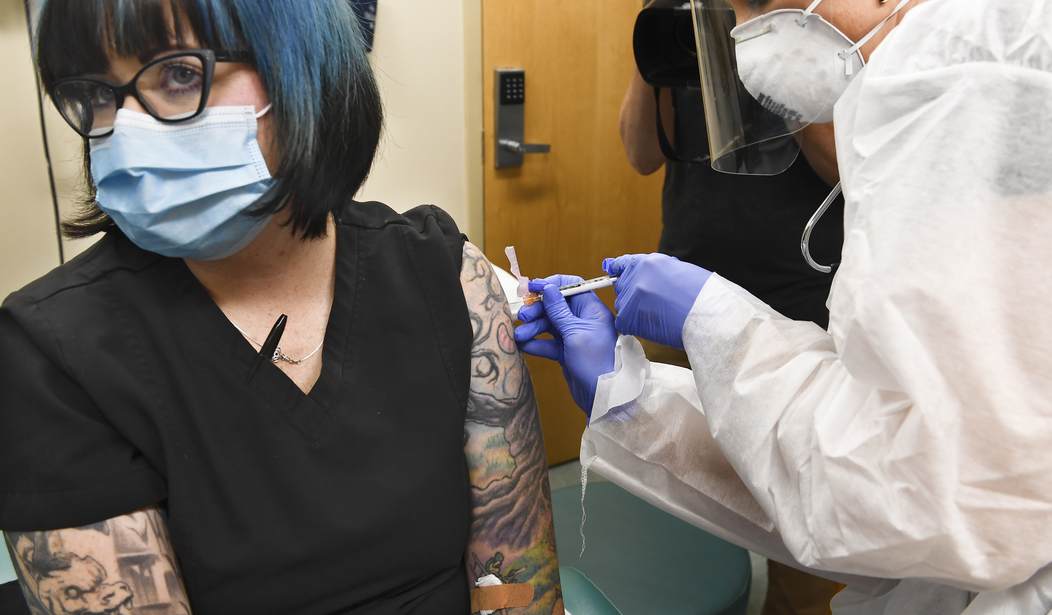On April 13, 2021, the FDA decided to pause the Johnson and Johnson vaccine’s use due to six women suffering from an unusual type of blot clot and low platelets, which assist a person’s blood with clotting. There have been two distinct opinions on this move in the commentariat that are opposed.
The first position is that this pause on the Johnson and Johnson vaccine is ridiculous based on population-wide statistics for vaccine side effects. Six women out of over seven million doses are not sufficient to deprive the rest of the population of a vaccine effective in preventing severe illness and death from COVID-19. This point of view is understandable and many also correctly point out that the widespread deployment of the COVID-19 vaccines has resulted in more robust data than traditional safety trials. It also points out the genuine possibility the pause will create additional vaccine hesitancy.
The second position is that pausing on the Johnson and Johnson vaccine is the correct step to take because of the severity of the side effect. These commentators point out that these vaccines are still considered investigational because their use is under an Emergency Use Authorization (EUA). And while it is only six women from a public health perspective, the six women and their families deserve an answer.
There may be another view that needs to be considered, based on the CDC’s Vaccine Adverse Events Reporting System (VAERS) data, the immune system’s science, and how vaccines create immunity. Clots can form in many areas of the body, and their presence is either explicit or plausible in a fair number of the adverse events documented in VAERS following all three of the vaccines. Discussing and reviewing the data in VAERS requires more than a few disclaimers. The system makes you accept these disclaimers before you review the data and notes explicitly:
- Vaccine providers are encouraged to report any clinically significant health problem following vaccination to VAERS, whether or not they believe the vaccine was the cause.
- Reports may include incomplete, inaccurate, coincidental, and unverified information.
- The number of reports alone cannot be interpreted or used to reach conclusions about the existence, severity, frequency, or rates of problems associated with vaccines.
- VAERS data are limited to vaccine adverse event reports received between 1990 and the most recent date for which data are available.
- VAERS data do not represent all known safety information for a vaccine and should be interpreted in the context of other scientific information.
With that in mind, the CDC’s automatic report generator, Wonder, reports 1,666 adverse events that include death in proximity to receiving one or more doses of one of the COVID-19 vaccines between December of 2020 and April 2, 2021. The detail in the data set for symptoms and the event investigation files indicate that some of these have nothing to do with the vaccine. Just as the COVID-19 death statistics include some number of deaths related to things like gunshot wounds, overdoses, and those with an end-stage terminal illness, so does the adverse event data.
However, it also includes deaths due to strokes, heart attacks, and other diagnoses that are plausibly due to clots, in addition to the unusual ones suffered by the six women who received the Johnson and Johnson vaccine. There are also adverse events that do not involve death but plausibly or explicitly involve blood clots. These events are not isolated to the Johnson and Johnson brand.
Hooman Noorchashm, M.D., Ph.D., has warned of the possibility of a harmed minority in the public health bureaucracy’s rush to vaccination. He is not an anti-vaxxer by any means, views the development of the COVID-19 vaccines as a medical miracle, and has received the COVID-19 vaccination himself. However, his wife died due to a gynecological procedure where she was one of a minority of women to develop cancer in the aftermath of the treatment. Noorchashm is acutely aware of the health bureaucracy’s willingness to ignore the harmed minority in favor of the majority who benefit from treatment and left his career as a professor and surgeon to become a public health advocate.
In an appearance on Tucker Carlson Tonight, Noorchashm offered measured and detailed recommendations regarding the pause in administering the Johnson and Johnson vaccine. Before appearing, he sent a letter to the FDA telling the agency that it is essential to determine whether the six women affected by the rare clot had been recently or previously infected with COVID-19. Noorchashm has been pressing the vaccination-following-infection issue because of how the vaccine-induced immune response will behave in some who have recovered. He reiterated his position during his appearance:
I want to reiterate as we have before, the most unprecedented thing that we’re doing in this vaccine campaign is that we’re deploying it indiscriminately into folks who have been recently or previously infected. And I think that we shouldn’t underestimate what the effect of a vaccine-driven immune response is on the tissues in individuals who have been previously infected, that literally, the antigenic footprint of the virus persists in the tissues of the previously infected.
So, it’s not a far stretch to imagine that those tissues, such as the inner lining of the blood vessel, will be targeted by the vaccine immune response.
To simplify, the sites where a recovered patient’s body fought off the virus—the lungs, the heart, the blood vessels, and even the brain, to name a few—remain physiologically “marked.” Vaccine-generated immune cells will attack these sites in the body as if they are still infected, potentially causing problems. Given the number of organs in the body that COVID-19 reportedly infects, Noorchashm’s explanation makes me wonder if this phenomenon could cause many of the adverse reactions noted in VAERS, from diarrhea to blinding headaches, high fevers, and shortness of breath. I would love to ask him.
If that is possible, Noorchashm has a simple investigatory suggestion for the health agencies:
In fact, this is actually a very easy thing, Tucker, to evaluate for. The immune response of the naturally infected actually mounts a response against something called the nucleocapsid protein of the virus. And in fact, in these six young women, unfortunately, had these severe adverse reactions, I would really challenge the FDA and CDC to inform the American people as to whether or not these individuals had anti-nucleocapsid antibodies in their blood.
Because if they did, they were naturally infected, and that association is going to be very critical. You know, I think it’s a major mistake to assume that you can put this vaccine into people who have been recently or currently infected and expect that no complications could result.
Recovered patients and those who display antibodies are likely to get different advice from different healthcare providers regarding COVID-19 vaccination. In speaking to healthcare professionals that I respect and trust with my care, the answer is in dispute. One woman in her 70s I know was told not to get a vaccine after she took care of her husband, who suffered from severe COVID-19, when she displayed antibodies. Another much younger friend’s employer is nearly mandating vaccination. Following her first dose of an mRNA vaccine, she suffered such an intractable headache and fell into such a deep and prolonged sleep that she skipped the second shot because she and her husband are terrified.
If the health bureaucracy wants to improve, and at this point, recover confidence in all of the vaccines including Johnson and Johnson, clarity on whether recovered patients need to be vaccinated would be a significant step. While some vaccinations may require booster shots, like getting a tetanus shot after a penetrating injury, those who have recovered from an illness are not generally vaccinated. Adults who recovered from chickenpox as children were not advised to get the chickenpox vaccine when it hit the market. While the virus that causes chickenpox is in a different family than COVID-19, clarity on why a different principle would apply in the same clear terms offered by Noorchashm from the public health agencies would be helpful.
The FDA’s decision to pause the Johnson and Johnson vaccine’s use is neither right nor wrong. Instead, it is an opportunity to provide Americans with additional well-founded guidance regarding the COVID-19 vaccines. If Dr. Noorchashm’s hypothesis is correct, it could save not only lives but needless suffering. It may also help guide employer and business policy in a more reasoned way. And after the last year, our public health intelligentsia owes us that.
WATCH the full clip. Noorchashm also appeared for an entire hour on Tucker Carlson Today on Fox Nation for an in-depth interview:
*Disclaimer: This column is meant to raise questions in the interest of public health, not to come to any conclusions. Any difference in totals between the spreadsheets linked in this article and the data from Wonder is a combination of different reporting periods and the inclusion of 85 adverse events from vaccines other than those for COVID-19 on the complete data sets. This disparity can only be reconciled using the incident number on tens of thousands of records in separate reports.










Join the conversation as a VIP Member